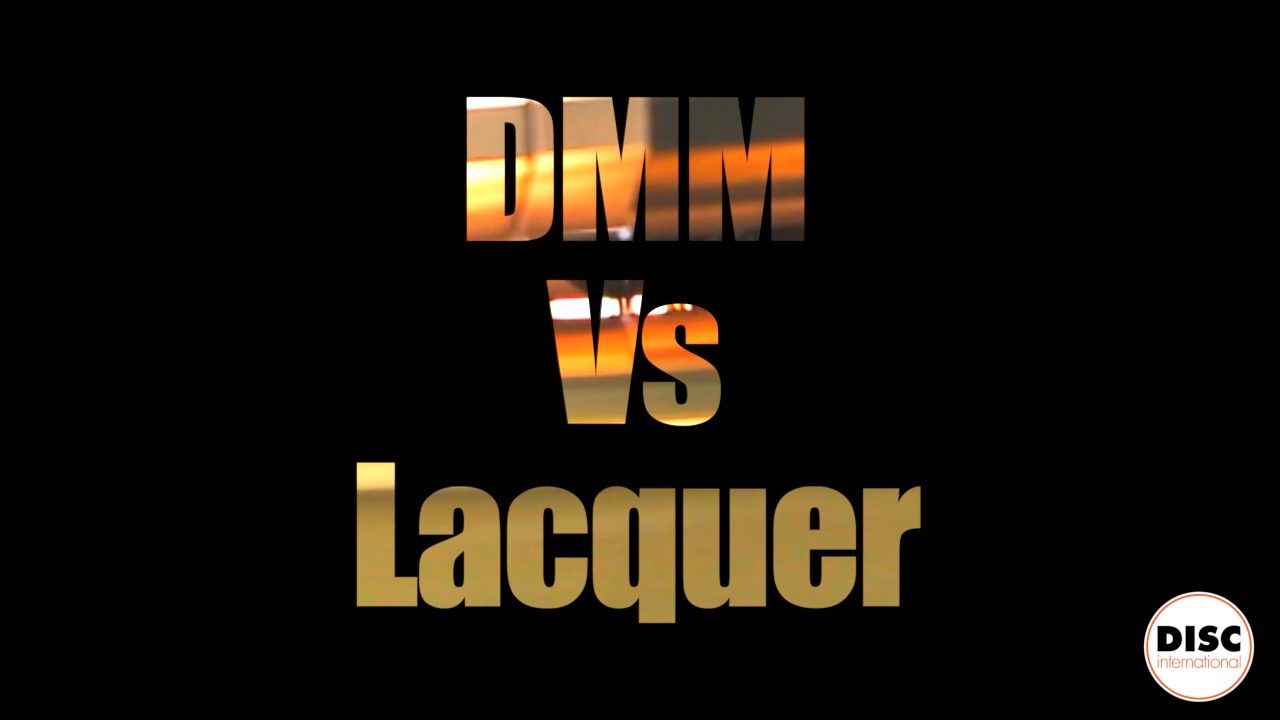There are some who prefer lacquer, some who prefer DMM and many that really don’t mind. But either way, the process of cutting vinyl is a stage that has to be completed before a vinyl record goes to press. It’s the stage between you supplying your music master and the music actually being pressed on the vinyl record. There are two choices, cutting to lacquer or cutting directly to a copper plate.
Direct Metal Mastering or DMM as it’s known, was co-developed by Neumann and Teldec and differs from lacquer cutting because the lathe engraves the audio signal directly onto a hard metal copper-plated master disc rather than into a soft lacquer-coated aluminium disc.
The lacquer itself is an aluminium disc (either 14”, 12” or 10” in size to provide a handling area for the 12”, 10”, or 7” records that will be cut), coated in nitrocellulose.
A lacquer cut is smooth, warmer and can be more pleasing to the ears. The sound of lacquer can be credited to the depth of the grooves on a lacquer, which can go deeper than DMM.
The process of DMM cutting is perhaps more precise and has a better image edge definition under a microscope. It has a brighter and more defined top-end due to higher frequency modulation in the groove caused by the vibration of the cutter head.
DMM is a cheaper process than lacquer cutting as it removes the need for two stages of the galvanic process (creating the plates that we press records from). This includes the “silvering” wash to make the lacquers electrically conductive and a second step of electroplating to create a master of the lacquer. Since DMM cutting avoids both of these stages, the risk of introducing greater surface noise is reduced.
For lacquer, the process is–
1. Cutting to lacquer.
2. Creating a copper master with a negative image of the lacquer (master).
3. Creating another copper plate with a positive image (positive).
4. Then creating ‘stampers’ with a negative image. These are used to press the positive image into the final record.
The reason for what seems to be a long-winded process is that you can recreate stampers from the Positive many times and the same with the Positive from the Master. If you skip this stage and the stamper is damaged, you will have to recut your record again. Since the DMM is cut directly onto copper, the first stage of galvanics is bypassed, resulting in cleaner processing with less surface noise and less chance of errors during processing.
One advantage of lacquer cutting is that it has the capability of producing louder sides since you can cut deeper into the soft surface of a lacquer disc compared to a hard copper DMM blank. This may appeal to those cutting 12″ club singles or LPs with shorter sides. However, it should be noted that loudness isn’t without risk, as it can induce distortion or skipping on some turntables.
Since lacquers aren’t perfectly flat, it’s necessary for an engineer to cut a wider groove to avoid the risk of skipping issues during playback. These wider grooves result in a shortened playback time per side on lacquer cut projects. This issue is mitigated with DMM cutting as the copper layer on the disc is flat and therefore allows the engineer to cut a 20% narrower groove, which results in a longer cutting time. Therefore, with DMM you can safely fit up to 6 minutes of audio per side on a 7” (at 45 RPM), 15 minutes on a 10” (33 RPM) and 22 minutes on a 12” (33 RPM), depending on the genre of the recording. Longer sides are also possible with the risk of incurring some distortion.
At DISC International we offer both options, but DMM is also the most cost-effective choice for many record labels and is available on all formats, 7” singles, 10” records, 12” vinyl, colour vinyl records and picture discs.
For more information, here is a great video by Gearbox Records showing and explaining how a lacquer is cut.
Get in touch now if you have a record you want to cut with DISC international [email protected]
